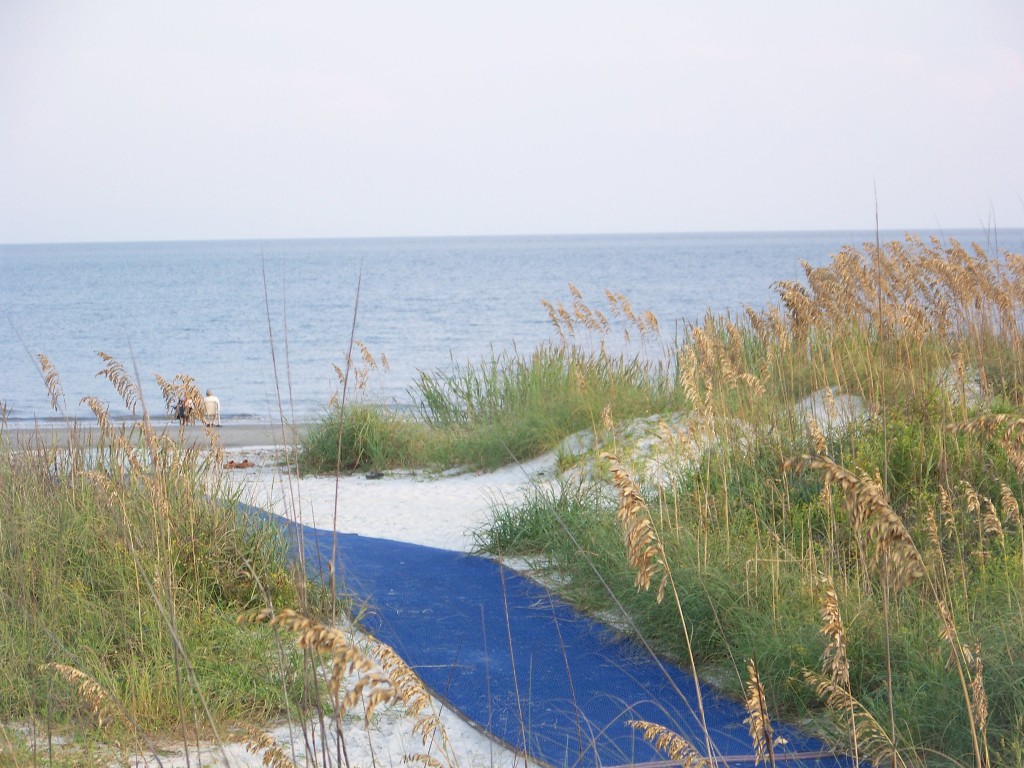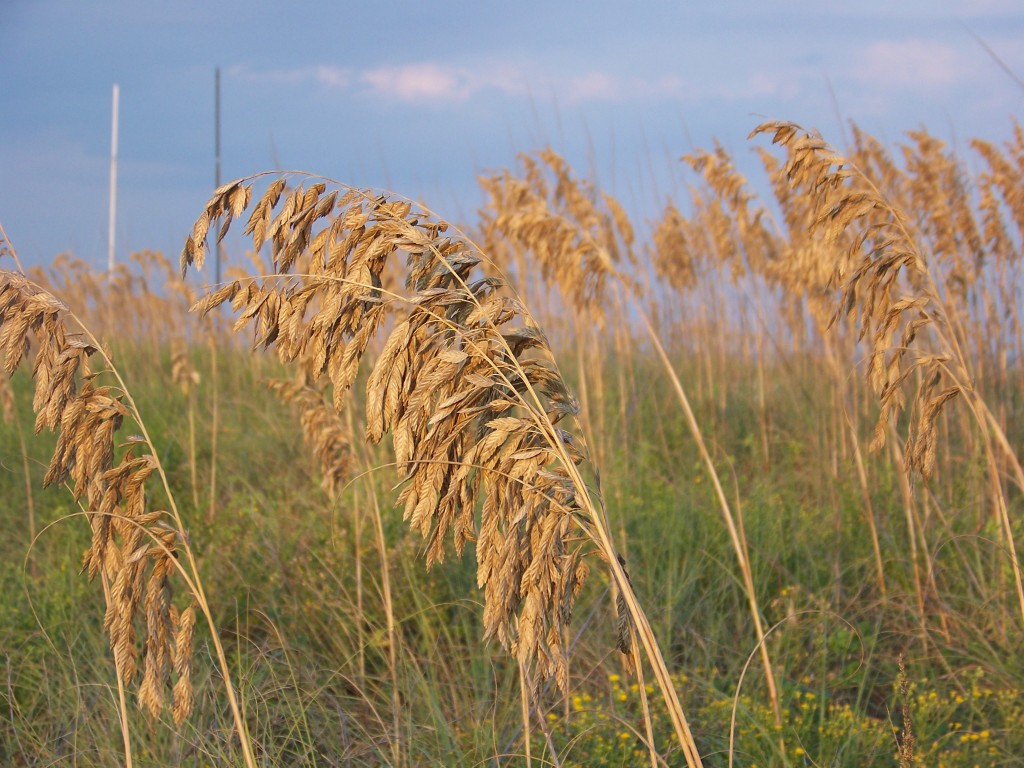 I moved to the beach for the ocean, the waves, the sand, the sun and the lifestyle those things bring with them.
I moved to the beach for the ocean, the waves, the sand, the sun and the lifestyle those things bring with them.
After I arrived, I also grew to love many things I had little noticed before.
Dune grass in general and sea oats in particular are chief among those things.
 The golden yellow stalks reflecting the early fall sun and the grass bending with the breeze coming off the ocean are a part of what is “right with the world.†As comfort food is to the stomach, so the untamed growth of sea oats is to the soul.
The golden yellow stalks reflecting the early fall sun and the grass bending with the breeze coming off the ocean are a part of what is “right with the world.†As comfort food is to the stomach, so the untamed growth of sea oats is to the soul.
In addition to their aesthetics, they serve a practical purpose. Sea oats span the Carolina coast and beyond, fortifying the dune structure by expanding their roots deep into the dunes.
Also, I’ve yet to kill any, a bright spot in my otherwise sordid past with vegetation.
They’re a hardy, happy lot, able to withstand sun, wind, rain, cold, salt water, hurricanes, this one island mom in the Carolinas, and the like. And unlike my last sago palm that claimed to “want minimal attention†but clearly needed more than I had to give, much like a boyfriend I had in the 80s, at least sea oats truly can survive without any attention from humans.
Which is good.
Because I really like them. So I’d prefer not to mess with them on the pretense of increasing their odds of thriving, knowing that in truth, I’d just be proving the survival of the fittest gardener principle. Which basically is that if your gardener isn’t fit (a.k.a. me), in the end, you are just a little sago palm without hope.
(Are there life parallels that can be drawn here? It’s so hard to be sure.)
So grow, sea oats, grow, unencumbered by the failures of mothers too busy to remember to water, too oblivious to the existence of fertilizer, too stupid to consider things like soil composition, drainage, and sun exposure.
Be free. Be yourselves.
Be not dead, but thrive.
You have totally convinced me that I need to transplant wild sea oats in my sandy yard. Think they would survive the winter? Honestly, I have looked into planting dune grass all over our hills. I don’t care what grows there, as long as its something that doesn’t need any sort of tending. I love the tranquility of wild indigenous plants.
I’m not sure how the sea oats would do, since I’ve heard they only make it about as far north as Virginia, but whatever varieties are in Michigan along the lake are beautiful. I’ve seen dune grass grown in the parts of MI I’m familiar with that are not directly on the lake, and it seems to do fine. Plus, there’s no upkeep. In fact, I saw a house about a mile from Lake Michigan where the entire lawn was dune grass, and I thought it looked great. And the owners were probably out on the lake enjoying themselves, instead of mowing and fertilizing their golf course lawn, like the guy next door.